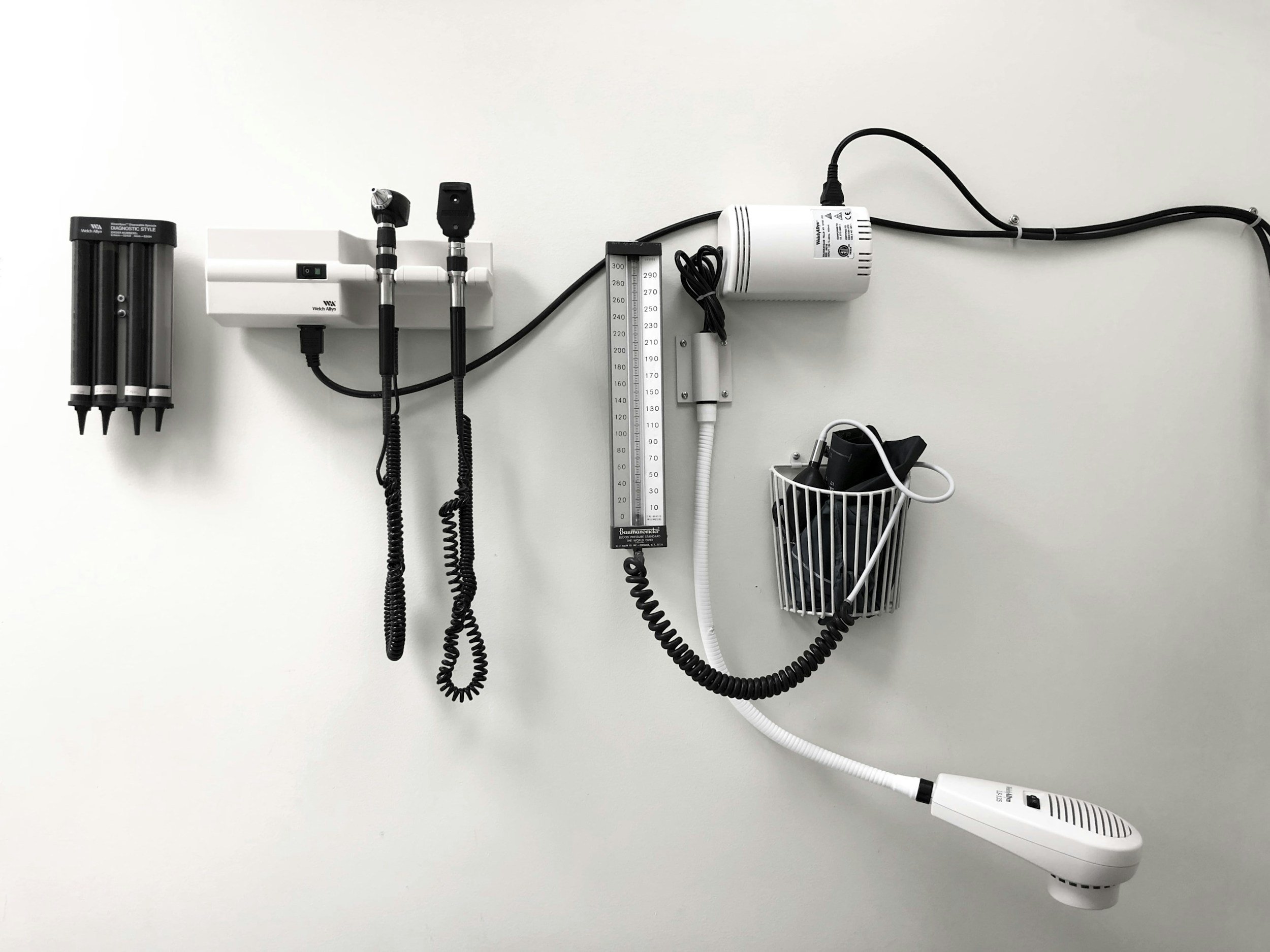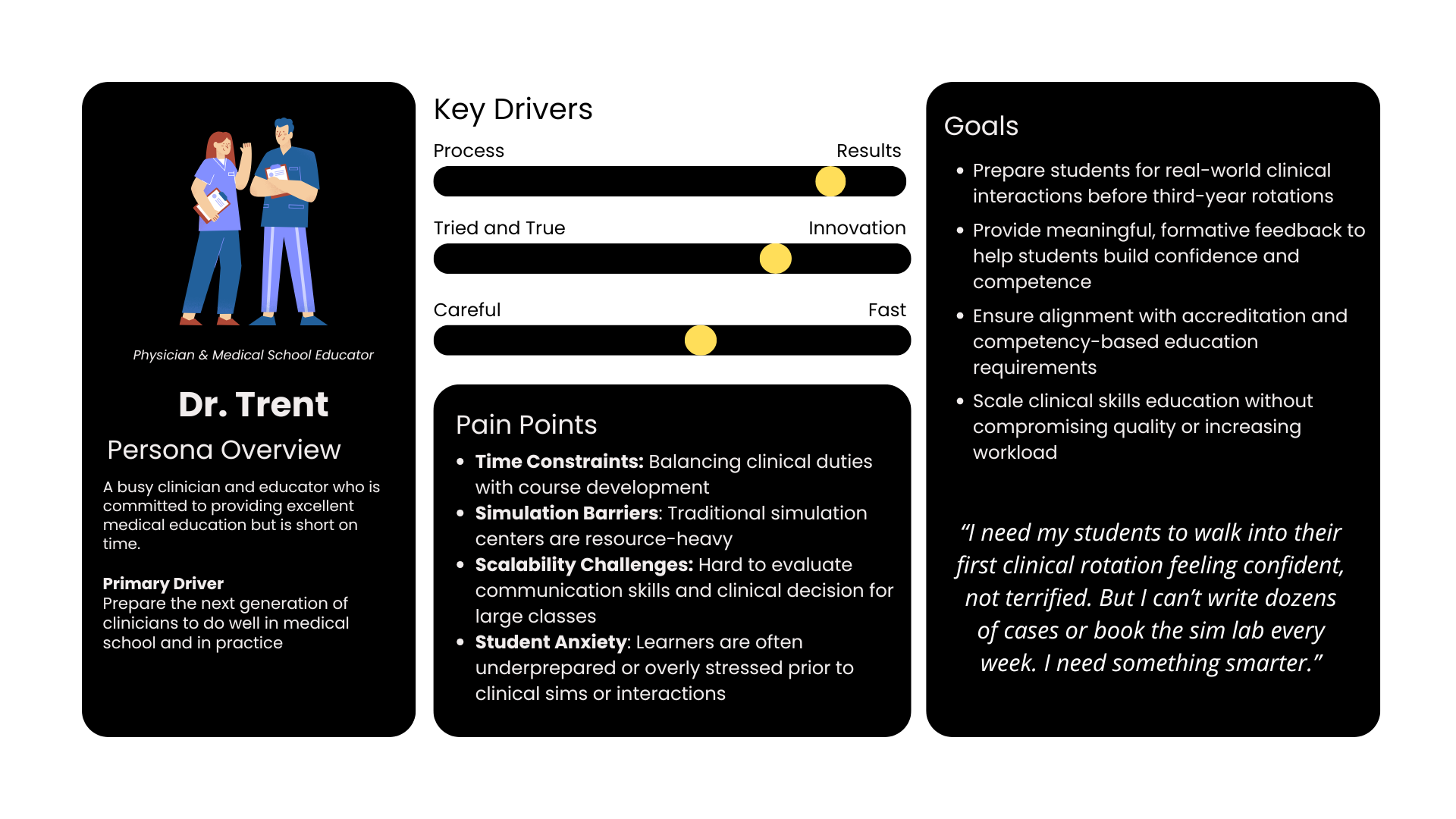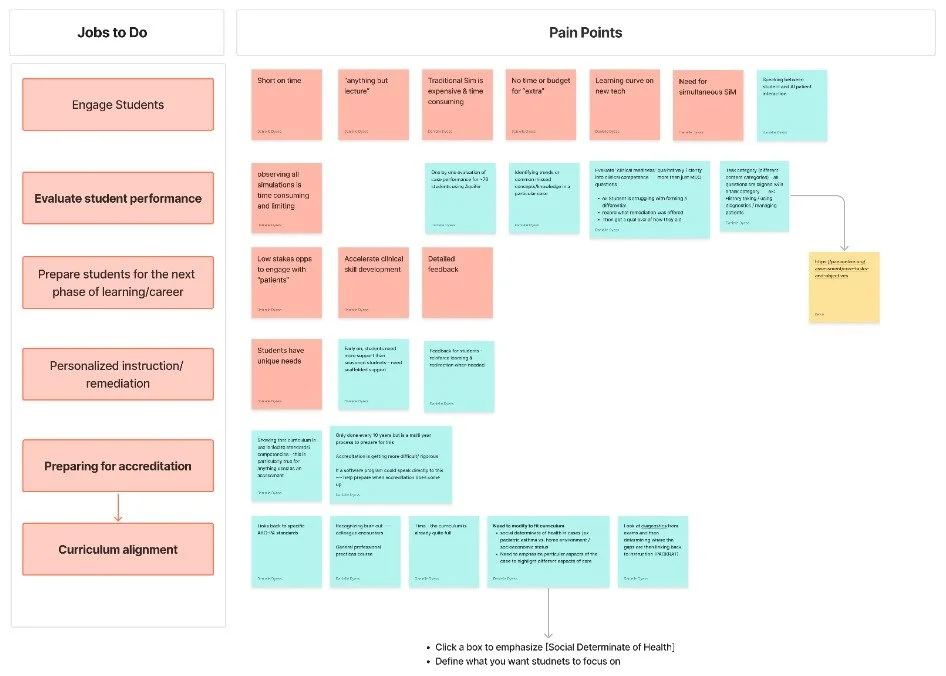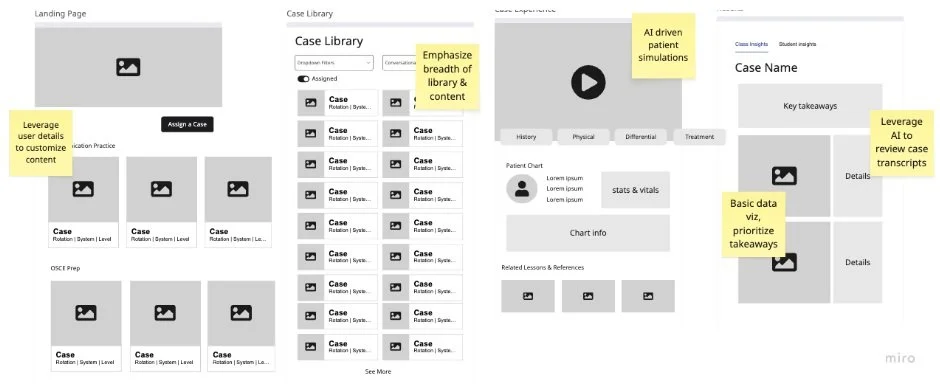
THE PROBLEM
Medical students need to practice applying conceptual knowledge in authentic situations.

Medical students face a challenge in the transition from didactic instruction in the first half of medical to application when they start clinical rotations. The mental leap to apply conceptional knowledge to a bleeding patient in a crowded ER is a big one. We addressed this gap in training with AI-driven case based learning that provides studnets with the opportunity to interact with patients in authentic and dynamic clinical scenarios.
Results
Seven months post-launch, the product has facilitated over 30,000 case sessions across more than 9,000 unique users. Its distinctive value proposition of combining clinical rigor with a simple, intuitive user experience continues to resonate with medical institutions. As of this writing, 58 healthcare education programs have either piloted or actively adopted the platform, reflecting strong early momentum and market fit.
Understanding our primary customer:
Healthcare Educators
Problems to solve:
Educators need to facilitate patient interactions practice for medical students in order to prepare them for clinical rotations.
Writing simulation cases is time consuming and traditional simulation centers are cost and time intensive
Educators need to accelerate students’ clinical skill development and evaluate their preparedness at scale
Students need lower-stake opportunities to practice patient interactions before high-stakes evaluations
Enable streamlined way to deliver realistic patient interaction practice without needing full simulation center resources
Help accelerate clinical skill development through repetition and immediate feedback
Enable faculty to efficiently evaluate communication and clinical reasoning skills objectively across many students
Support for asynchronous learning to fit student schedules and free up educator time
Understanding the problems
How might we…
Defining our plan
Build a best-in-class patient simulation experience addressing the needs of faculty and enterprise customers.
For healthcare educators, the ability to facilitate realistic patient interaction simulations efficiently, cost effectively and more regularly in order to better prepare students for success in clinical rotations and, ultimately, in practice.
Project Challenges
First to market
Bringing this product to market as one of the first scalable, AI-powered patient simulation platform for pre-clinical medical education presented both a strategic advantage and a significant challenge. While there was a clear unmet need - educators lacked low-cost, low-stakes ways to help students practice patient interactions - the absence of direct competitors also meant a lack of precedent. Every aspect of the product experience, from the simulation format to the faculty assignment model, had to be built from first principles and rigorously validated through pilots. We had to educate customers on how this new solution fit into their existing workflows, while simultaneously proving that the experience was pedagogically sound and technically reliable. Striking the right balance between innovation and adoption readiness was essential to building credibility in a conservative, high-stakes domain like healthcare education.
Building with third party dependencies
A core complexity of the this platform was its reliance on third-party providers for critical AI functionality. While these technologies were essential to delivering a lifelike, responsive patient experience, they introduced unique technical, operational and revenue risks. Shifts in provider APIs, latency issues, model accuracy limitations, and integration hurdles all impacted the quality of the end-user experience. Additionally, the medical education use case required a higher threshold of reliability and domain specificity than typical consumer-facing AI tools. Developing prompts and safeguards to ensure consistent, clinically appropriate responses - while also maintaining data privacy and performance standards - required tight engineering, product & content collaboration, aggressive testing, and ongoing iteration.


